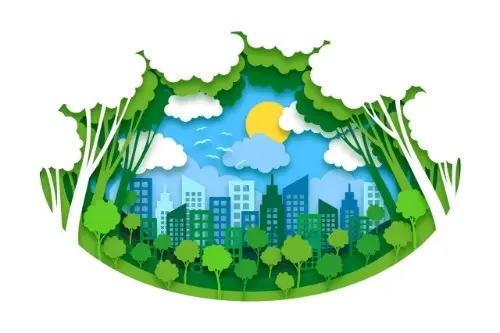With the continuous improvement of people’s environmental awareness, more and more consumers are paying attention to whether the materials and manufacturing processes of bags and suitcases meet sustainable development requirements. Therefore, in the bag and suitcase industry, choosing sustainable materials and manufacturing processes has become a trend. This article will explore how to achieve better environmental protection from two aspects: materials and manufacturing processes.
I. Selection of bag and suitcase materials

1. Biodegradable materials
Biodegradable materials are materials that can naturally degrade without polluting the environment. Compared with traditional materials, biodegradable materials are more environmentally friendly and sustainable. Nowadays, biodegradable materials have been widely used in the bag and suitcase industry, such as biodegradable plastics, biodegradable fibers, and so on.
2. Recyclable materials
Recyclable materials refer to materials that can be recycled and reused. This kind of material can reduce waste of resources and reduce environmental impact. Recyclable materials can be plastics, metals, paper, etc. In the bag and suitcase industry, examples include bags made from old tires or bags made from recycled plastics.
3. Natural materials
Natural materials are materials obtained through natural means, such as leather, hemp, etc. This kind of material is more in line with people’s environmental protection concept because it can reduce the impact on the environment. However, natural materials are usually more expensive and there are also issues such as harm to animals and plants, so careful consideration is needed when selecting.
II. Improvement of bag and suitcase manufacturing processes

1. Energy-saving and environmentally friendly production processes
By using energy-saving and environmentally friendly production processes, energy consumption in bag and suitcase manufacturing can be reduced, and pollution to the environment can be reduced. For example, by using renewable energy such as solar energy instead of traditional energy consumption methods, or by reducing production waste to improve the bag and suitcase manufacturing process.1
2. Perfect recycling mechanism
Manufacturing sustainable bags and suitcases is not just about choosing sustainable materials, but also establishing a perfect recycling mechanism in the manufacturing process. The recycling mechanism can classify and recycle old bags and suitcases, and then use them to produce new bags and suitcases. This method can not only reduce resource waste but also reduce pollution to the environment.
3. Humanized design
When manufacturing sustainable bags and suitcases, the needs of the bag and suitcase users should also be considered. Through humanized design, bags and suitcases can be made more convenient and comfortable for users to use, which can encourage users to use them for longer and reduce waste.





